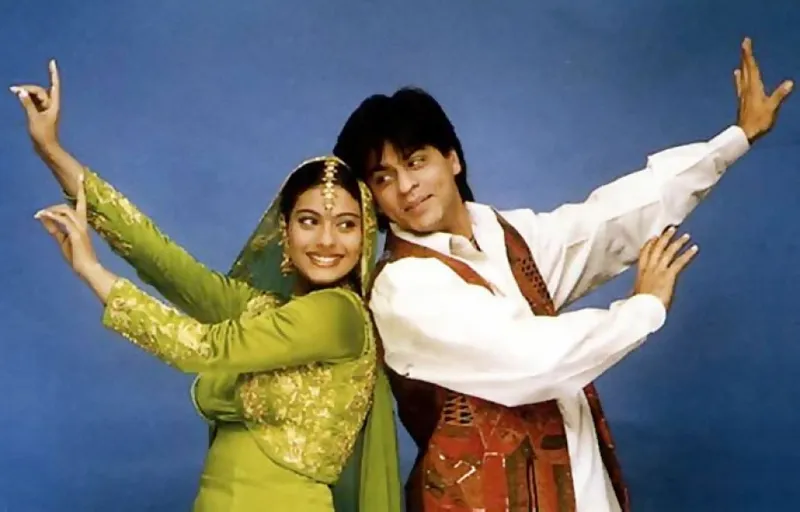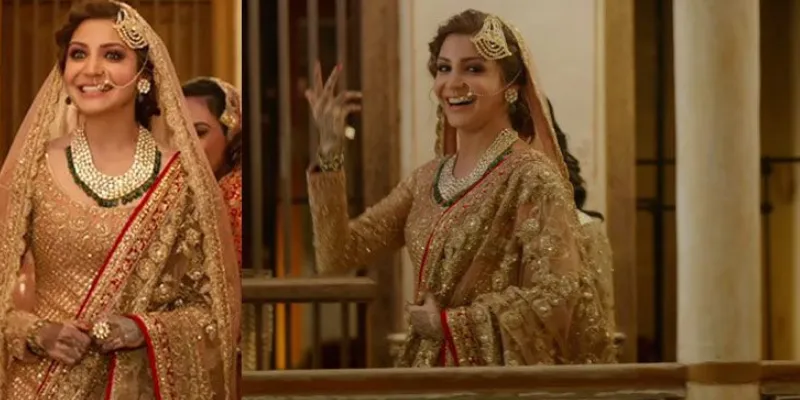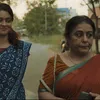Fashion designer Manish Malhotra on completing 30 years in the industry and being targeted as an outsider
The fashion designer in a free-wheeling chat with YSWeekender says that every day is a new learning for him, and how entrepreneurship can get a bit tedious and daunting at times, though it’s also very rewarding.
When you hear the name Manish Malhotra, what immediately springs to mind, are some iconic star makeovers. Whether it’s Karisma Kapoor’s much-talked-about look in Raja Hindustani, Urmila Matondkar’s smouldering style in Rangeela or the late Sridevi being his favourite muse, the fashion designer-entrepreneur has taken the industry by storm.
Despite being criticised by other fashion designers as an “outsider” and catering to a film clientele, Manish has not only made a mark as an intrepid designer but has also branched out into many exciting forays that include beauty, productions, make-up and homes.
As the designer completes 30 years in the industry in 2020, he tells YSWeekender in a free-wheeling chat that every day is a new learning for him, and how entrepreneurship can get a bit tedious and daunting at times, though it’s also very rewarding.
Edited excerpts from the interview:
YS Weekender (YSW): Thirty years is a big milestone. How does it feel?
Manish Malhotra (MM): I worked, and I still work everything from my heart. Work never tires me, and though it makes me anxious, nervous, and angry, I continue like a machine. It’s in fact, the first time in this lockdown where there’s a pause. I’m lucky that when I get up from bed, I go to work at a job I love. My work is my life.
When I sit back and retrace my memories, it comes colliding back. There are so many memories and episodes. It’s like a stream of consciousness and a big blur. This is, in fact, one of my biggest regrets too because I never created, catalogued and compiled these memories. Also, it was not a digital age at the time. But overall, I will always say, I am filled with gratitude while looking back. My journey has been awesome and today, I don’t have the time to sit back and fall back into the reverie of old times because I’m busy, and that’s a blessing.
Fifteen years of non-stop movies and after that 15 years of my label and work in the movies have kept me so occupied that I never had the time to sit back and crystallise my memories.
YSW: How has the fashion industry evolved over time?
MM: From the time I started in the 90s until today, so much has changed. Today, people are so aware of themselves, their styles and what they like and what they don’t.
Movies have changed so much, and so have the actresses, and the brides. A woman can flaunt a traditional temple saree one day and the other day she could be wearing a metallic gown. This heterogeneity is beautiful. Today, the wearer has taken precedence over trends.
YSW: In your 30-year love affair with the movies, tell us about some defining moments that will always stay with you?
MM: There are so many; each project gives you some learnings. The best ones are of course memorable, and the not-so-good ones help you understand and learn from your mistakes and do better the next time. One thing is that I invest 100 per cent in everything I do. so, it will be difficult to pick one of them and say that was defining for me. Having said that, it is true that movies like Rangeela, Kuch Kuch Hota Hai, Dil To Pagal Hai, Mohabbatein, Kabhi Khushi Kabhi Gham, Raja Hindustani… have resonated really well with the audience.

Iconic looks for Dilwale Dulhania Le Jayenge
I believe I did something which was the need of the hour. I added some much-needed realness to the screen with Dilwale Dulhania Le Jayenge, crystallising the character in Rangeela, and the never-seen-before makeover in Raja Hindustani that defined film fashion and costumes in India on a broader level. For the first time, I bought outfits from international stores for Judaai and that became the norm afterwards.
YSW: From among your most iconic looks which ones are the closest to your heart?
MM: It will be incredibly difficult to select any one of them. As I say, each film is special. But the audience has touted some looks that have become iconic over time. Be it Urmila in Rangeela or Karishma in DDLJ, or Aishwarya in Mohabbatein or Kareena in K3G or Kajol in KKHH or Preity in Kal Ho Naa Ho, there are so many. Some looks can be iconic for the audience, but for me, each one is special because my hard work and investment is always there, in equal measure.
YSW: From Rangeela to Takht, how have you evolved as a designer?

An iconic look for Anushka Sharma
MM: Evolution is a continuous process. With every project, you learn. It’s important to keep your aesthetics intact. I always feel that it’s the journey in itself. We learn every day and it is those small learnings that accumulate over a period of time.
For example, when I travel to any place, I take so many pictures so, when I return to draw, the mood board in my mind is already ready. For some projects, like Takht, which is a period film, historical accuracy is important, and it requires deep research, but others just need your acute observation skills. I don’t come from any fashion school with a definite pedagogy, so for me, it has been my observation and visualisation skills.
Again, having said that, my technique remains the same even today. So, the first thing I do is I try to learn the character really well, and that’s the first step.
My vision was always to work with a ‘whole look’ that included hair, make-up, jewellery and others. I never limited myself to just costumes. My intention was to never step on anyone else’s profile of work but eventually, my contributions did so.
So, in the beginning, it was slightly difficult to wade through the hairstylists, make-up artists and creative directors, etc. But with time, people started acknowledging and appreciating my value towards a shared goal.
Gumrah is where I sat with Sridevi to explain about her hair and make-up. Back then, rules in films were rigid and sometimes in fact, unreasonable. Like a girl with a western outfit must have short hair and similarly, a girl in an Indian outfit will sport long hair and corresponding make-up.
But it never made sense to me as a costume stylist. I asked, how can the same character have two different kinds of hairstyles in the next sequence? And thankfully, the team understood. We defined the whole look for Sridevi for that movie and it was widely recognised for its on-screen realness and authenticity.
When I created those crop tops and paired them with sharara pants in Mohabbatein for the young couples, it resonated well with the millennials who were torn between the newly globalised India – as it conflicted with their traditions and the influx of western fashion. It’s important to contextualise your designs and give definition to a character through your designs.
YSW: You started your design house quite late. Was it a conscious decision?
MM: Opening a design house wasn’t even in my plan. I was so engrossed with my costume work; I hardly had the time to think of my own label. But as destiny would have it, the costumes that I made for movies got so popular and the demand for the lehengas and shararas sets were everywhere.
I started making one or two outfits for my friends and close relatives, and then gradually, it struck me to start my own label. Even then, I did not leave movies. Till today, I carefully oscillate between these two very different worlds of fashion and I’m glad that the journey has been truly rewarding.
YSW: What has entrepreneurship taught you?
MM: It has taught me everything - resilience, business acumen and creativity in the overall scheme of things. Entrepreneurship is not a cakewalk; it can get very daunting and tedious at times but then it’s also truly rewarding. Sometimes, when I look back, I adulate the journey that has taught me so much.
YSW: How do you feel about the trend of fashion going digital?
MM: To be honest, I was apprehensive about it, to begin with, but I loved the experience. I created two digital couture films – one for India Couture Week and another for Lakme Fashion Week, and the entire experience was satisfying. Both the videos were done entirely under Manish Malhotra Productions and were launched in 2018 with the Ambani wedding.
I’ve thoroughly enjoyed these digital versions of fashion shows. It teams my twin passion for films as well as fashion. It was all me, the clothes and the characters. I’ve introduced new Punjabi singers in these films, and I’ve been listening to them every night.
YSW: How has the pandemic affected the fashion industry and how are you pivoting during this situation?
MM: It has affected businesses world over, and even fashion has been hit hard. However, I always look at the positive side. It has catapulted businesses into things that were never-seen, or never-done-before. Nowadays, customers don’t want much, so quality has taken precedence over quantity.
YSW: Why do you think there are very few Indian designers designing for Hollywood?
MM: Well, the demand here in India is huge, so, unless you’ve your priorities set in Hollywood, you can keep yourself fully engrossed in your own market. In fact, global designers are eyeing the Indian market that is still untapped and is full of potential and there’s so much to do here before we step outside.
YSW: From dressing for Sridevi, one of your closest friends to her daughter Jhanvi being a showstopper for you… how has the experience been?
MM: Today, I’m dressing the fourth generation of actors in my career. From Sridevi to Jhanvi and Khushi and all in-between. What more could I ask for?
I must confess it’s not easy. There have been lots of ups and downs. But I think I come from the thought process where you wake up the next morning and say, “Okay, I’ve made this mistake, now what, now how do I rectify it and then go on…”
I never had the greatest support of the fashion fraternity on my side, I was always targeted and seen as an outsider because of my work in films as a costume designer. For most of them, I wasn’t meant to be in couture and Fashion Weeks and though this opinion rattles you, it can also be a huge learning.
YSW: Are airport looks overrated?
MM: I’m actually split on this. To be honest, it provides a whole new level of opportunities and business to the brands and partners involved. After all, it’s a great way to market your products.
YSW: What are your future plans?

A look from the jewellery line
MM: In the next five years, we hope to celebrate expansion, versatility, diversity, innovation and have a wider appeal.
Manish Malhotra Makeup was started in late 2018 in association with MyGlamm, headed by my niece Rriddhi Talwalkar and we’ve come a long way just in a span of two years.
Manish Malhotra Beauty is the only makeup brand that is successfully operating without any celebrity face and purely on its product merit.
Manish Malhotra Jewellery was started in late 2019 in association with Raniwala 1881. At present, I just curate the collections that are retailed at our store but we will soon come up with our own designs as well.
I have a special love with spaces. My home, also known as House No. 3 is popular, maybe for this reason. Manish Malhotra Home, which is at an early stage now reflects my design sensibility. The pandemic has stalled its working for a bit but we hope to soon strengthen its portfolio and launch it in a big way.
Besides there, there is Manish Malhotra Productions too, which is also set to take its course in the next financial year. I’m happy to kickstart it with two fulfilling couture films and am looking forward to doing more in this segment.
Edited by Asha Chowdary









